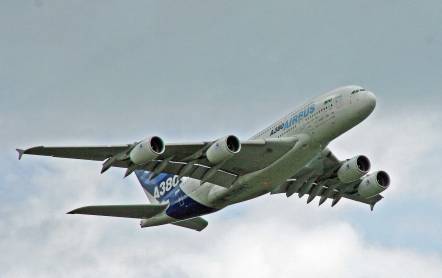 The basic model of commercial aviation is a thin tube of highly pressurised metal being propelled at 600 miles per hour by inflammable fuel at 35,000 feet in all weathers at temperatures of -57 degrees. So have you ever wondered how aviation got to be one of the safest forms of transport, despite being inherently full of such potentially catastrophic risks?
The basic model of commercial aviation is a thin tube of highly pressurised metal being propelled at 600 miles per hour by inflammable fuel at 35,000 feet in all weathers at temperatures of -57 degrees. So have you ever wondered how aviation got to be one of the safest forms of transport, despite being inherently full of such potentially catastrophic risks?
On the other hand, the average boardroom, comfortably at 20 degrees, often going nowhere, an executive suite above the ground, continues to struggle with business risks, and major business incidents and errors are showing no signs of reducing.
There are of course many reasons why aviation risk management is more advanced than the corporate equivalent. There is also one reason why it is not. It’s not because one group is cleverer or more dedicated than the other.
Most of the explanation lies in the imperative to get aviation safety right. The feedback loop on an aircraft is very fast and exceptionally forceful. If bad decisions can kill both you and hundreds of passengers at once, then you will tend to take risk management very seriously indeed. By contrast, poor board decisions usually take months, if not years, to become evident, and tend to result in financial losses that are often survivable for the executives concerned.
Business could learn a vast amount from the risk culture that aviation has developed as a result of its safety imperative. When something goes wrong in aviation, the major drive is to find out what went wrong, rather than finding culprits. The aim is to learn the lessons and then disseminate recommendations to manufacturers, pilots, operators, air traffic and anyone else, to ensure that this set of events cannot be repeated.
In business, by contrast, the focus is on naming and shaming the director held to be responsible, ensuring he doesn’t get a bonus and possibly gets fired. It’s driven by blood-lust, not analysis.
Aviation puts the emphasis on process, procedures and systems, accepting that humans will make mistakes. Moreover, the higher the stress levels, the more the mistakes that will be made. In the corporate world, the conventional assumption is that executives are too highly paid to make errors, and so if they do, the key outcome is for them to be punished.
Many will argue that this is simplistic. There are of course many other features of aviation risk management. It is often the media and politicians who personalise corporate failures. However, I haven’t heard many corporate commentators argue that the recent problems at Tesco and Morrisons, for example, shouldn’t be blamed on the outgoing CEO’s, but need to be understood in the broader context of the changing market and process failures in the individual companies.
In the end the question is; which of these two models produces a better understanding of what went wrong in a particular event? Which is therefore more likely to produce a lasting improvement in risk management?
Then ask yourself, how safe would you feel in an aircraft regulated by the standards of today’s corporate governance codes?
